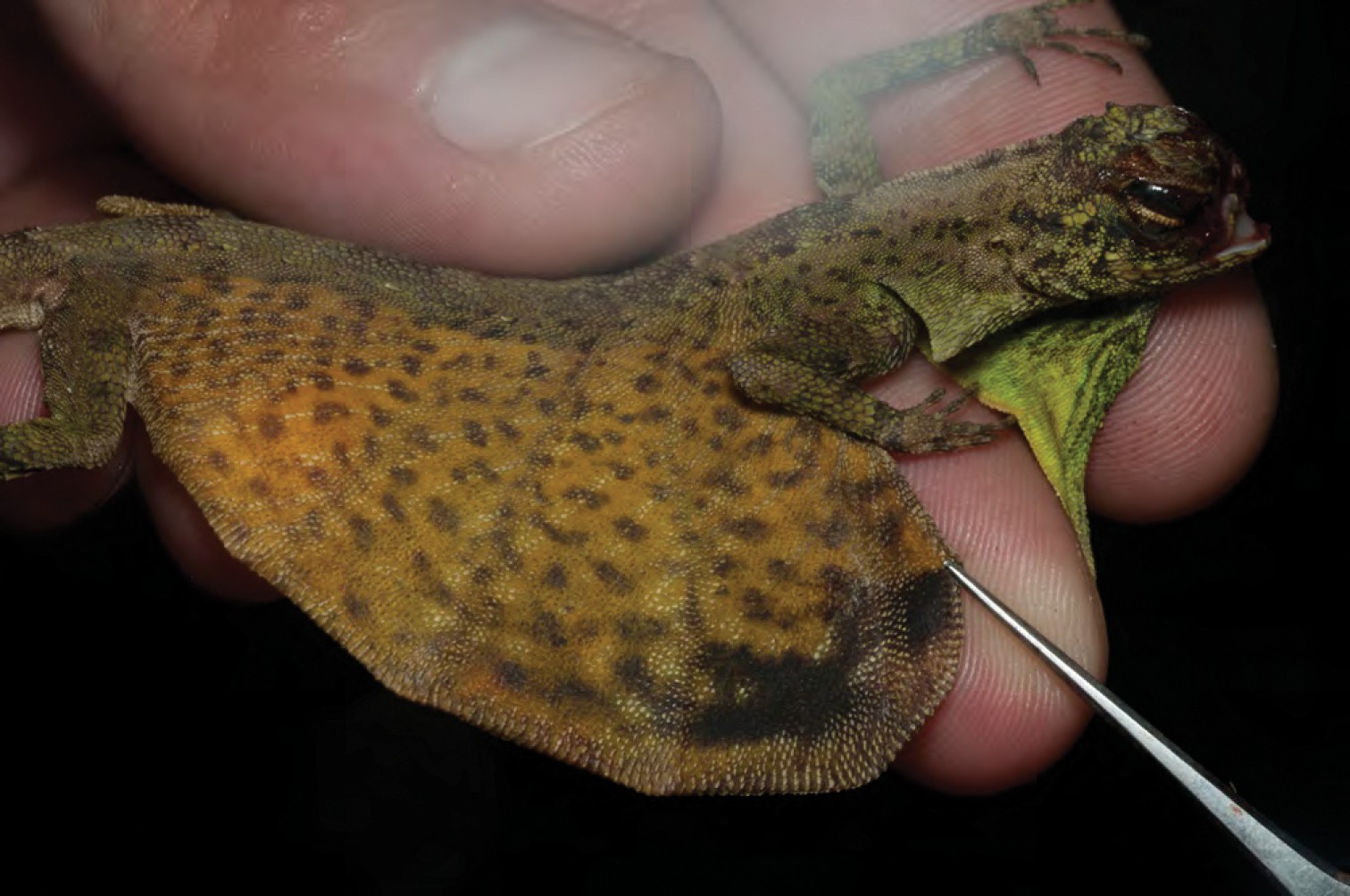Philippine flying dragon
A species of Flying lizards Scientific name : Draco spilopterus Genus : Flying lizards
Philippine flying dragon, A species of Flying lizards
Scientific name: Draco spilopterus
Genus: Flying lizards
Content
Description General Info
 Photo By Brown R, Siler C, Oliveros C, Welton L, Rock A, Swab J, Van Weerd M, van Beijnen J, Rodriguez D, Jose E, Diesmos A , used under CC-BY-3.0 /Cropped and compressed from original
Photo By Brown R, Siler C, Oliveros C, Welton L, Rock A, Swab J, Van Weerd M, van Beijnen J, Rodriguez D, Jose E, Diesmos A , used under CC-BY-3.0 /Cropped and compressed from original Description
Philippine flying dragon is a unique reptilian species known for its remarkable ability to glide from tree to tree, thanks to the patagia or 'wings' between its ribs. This behavior serves as a sophisticated anti-predator mechanism, allowing quick escape from ground-based threats. Additionally, philippine flying dragon exhibits resource partitioning by choosing particular trees for territorial and feeding purposes, leading to a reduction in inter-species competition. These traits showcase its intricate adaptations for survival in arboreal habitats.
General Info
Lifespan
5-8 years
Diet
Philippine flying dragon's dietary habits revolve primarily around insects. This species demonstrates a distinct preference for small arthropods, while occasionally expanding its diet to include other invertebrates, ensuring a balanced nutritional intake.
Appearance
Philippine flying dragon is a medium-sized flying lizard boasting a flattened body shape. Its scales are predominantly green, with pronounced yellow spots scattering across its wings and body. Males are known for their extended throat skin or gular flag, colored orange-yellow. The prominent feature of this species is their enlarged ribs that extend into wings, allowing them to glide from tree to tree. The young ones sport less bright coloration, which becomes more vibrant as they mature.
Behavior
Philippine flying dragon captures prey through swift gliding from tree to tree, aided by its adaptations for in-air maneuvers. This species is solitary, interacting mainly during mating periods. Displaying rich territorial behaviors, individuals 'patrol' and vigorously defend their arboreal territories. Their high visual acuity allows for effective camouflage, mimicking leaves among the trees, facilitating their arboreal survival strategy.

 Photo By Brown R, Siler C, Oliveros C, Welton L, Rock A, Swab J, Van Weerd M, van Beijnen J, Rodriguez D, Jose E, Diesmos A , used under CC-BY-3.0 /Cropped and compressed from original
Photo By Brown R, Siler C, Oliveros C, Welton L, Rock A, Swab J, Van Weerd M, van Beijnen J, Rodriguez D, Jose E, Diesmos A , used under CC-BY-3.0 /Cropped and compressed from original Scientific Classification
Phylum
Chordates Class
Reptiles Order
Lizards and snakes Family
Dragons Genus
Flying lizards Species
Philippine flying dragon